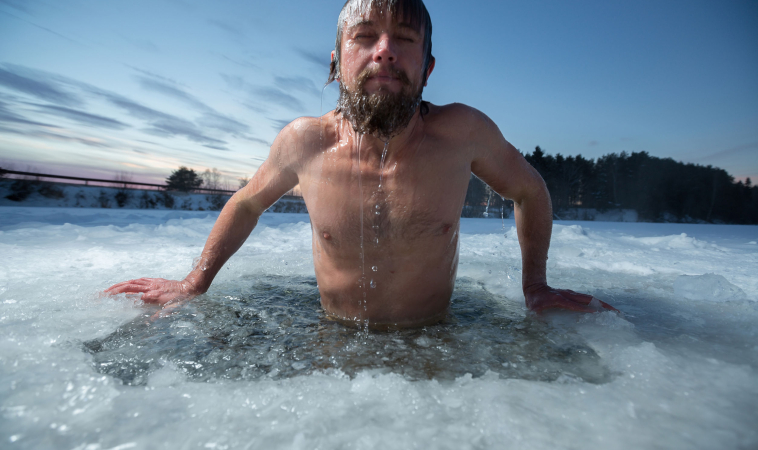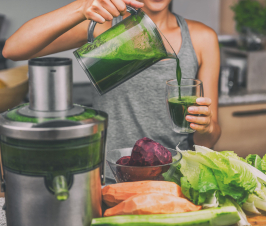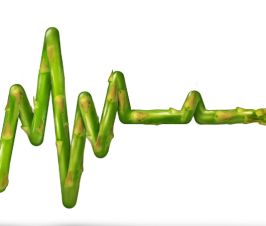Dr. Sarah King, ND
@sarahhealthyfox
With the weather turning colder, we tend to bundle up and turn up the heat. There isn’t anything wrong with comfort, but we shouldn’t overlook the power of cold temperature exposure.
Naturopaths have been studying and using hydrotherapy for hundreds of years. In the 1800s an Austrian farm peasant by the name of Priessnitz was using cold treatments and sweating to treat fractures, gout, and rheumatism1. With the help of other European physicians and the pre-existing knowledge of these water-based home therapies, hundreds of European doctors and nurses were trained on “Water Cure”. The history of hydrotherapy is extensive and the development of different techniques ranging from sweating and cold water application to constitutional treatments spanned over a hundred years.
Conventional doctors recognize the effects that temperature can have on a specific location. A cold compress will help decrease swelling and inflammation of a sprained ankle. A hot water bottle can help relax tight muscles, but naturopathically we know there is a greater influence at hand. In 2014, a medical facility in the Netherlands tested the theories of a Dutch man named Wim Hof, measuring hormones and mediators of inflammation and the immune system.
I recently listened to a podcast with Hof, the “Iceman” as he’s famously known, and was blown away by his temperature-related accomplishments. Hof said that at a young age he felt compelled to jump into freezing cold water. He taught himself to control his breathing, his heart rate, and his circulation. After sitting neck deep in ice water for over an hour, he was able to maintain a 37-degree Celsius core body temperature. How is this possible? It’s all in the breath, he explains: Controlling your breath and optimizing oxygen saturation, especially in the presence of extreme cold. The crushed ice experiment of 2010 showed that Hof’s metabolic rate had significantly increased during this immersion in ice water, as his body was trying to maintain its internal heat generation2.
Another study at the Thrombosis Research Institute showed that people who took a cold shower daily had more circulating white blood cells than control subjects3. It doesn’t sound like much fun – there are very few who actually like submerging themselves in cold water, but the following tips can help with any hydrotherapy treatment you begin:
- Start slow. For cold water therapies begin with cool water, and with each subsequent treatment, attempt to use colder water. Aim for “uncomfortable, but tolerable”.
- Don’t forget to breathe! Focus and concentrate. Keep your mind calm and control the breath in and out. If you can prevent panic, you’ll tolerate 30 seconds of cold water easier than you thought.
How can these studies help our use of hydrotherapy safely?
Have a naturopath help you to recognize what water temperature can do for you and when to utilize it. Something as simple as ending a hot shower with 30-60 seconds of cold water can increase oxygen absorption, carbon dioxide excretion, and peripheral white blood cell counts1. It stimulates circulation but also metabolism via increased Brown fat cells. These Brown adipose cells help generate heat by non-shivering mechanisms in the presence of cold exposure and have been linked to glucose control and insulin sensitivity – a promising direction in the treatment and prevention of type 2 diabetes4 and obesity5.
An alternate option for those looking for the benefits of hydrotherapy is to visit a therapeutic water spa or a spa that offers “thermotherapy”. Toronto’s Body Blitz has an incredible set up: a circuit consisting of a warm Dead Sea salt pool, hot Epsom salt pool, cold plunge pool as well as sauna and steam room to increase sweating. Quebec also has many spa locations that offer thermotherapy. Look for a circuit that alternates hot, cold, a rest period, and a sauna or other means of sweating.
 Dr. Sarah King is a licensed Naturopathic Doctor, graduating from the Canadian College of Naturopathic Medicine in 2014. Prior to completing her medical studies, she attended Nipissing University where she received her Honors Bachelor of Science in Biology. Sarah has a passion for women’s health and is a birth doula in Durham and Toronto Region. She treats a wide variety of health conditions including menstrual disorders and hormone balancing, fertility, prenatal care, digestive concerns, skin care and mental health/anxiety. Outside the office Sarah is an avid runner with a love of the GTA’s best forest trails. She also continues to improve her yoga practice and teaches breath work as part of stress management counseling to her patients.
Dr. Sarah King is a licensed Naturopathic Doctor, graduating from the Canadian College of Naturopathic Medicine in 2014. Prior to completing her medical studies, she attended Nipissing University where she received her Honors Bachelor of Science in Biology. Sarah has a passion for women’s health and is a birth doula in Durham and Toronto Region. She treats a wide variety of health conditions including menstrual disorders and hormone balancing, fertility, prenatal care, digestive concerns, skin care and mental health/anxiety. Outside the office Sarah is an avid runner with a love of the GTA’s best forest trails. She also continues to improve her yoga practice and teaches breath work as part of stress management counseling to her patients.
References:
- Lectures in Naturopathic Hydrotherapy 1988. Boyle, W., and Saine, A. Eclectic Medical Publications; Sandy, Oregon. p5-34.
- Groothius, J.T., Eijsvogels, T.M., Scholten, R.R, et al. Can meditation influence the autonomic nervous system? A case report of a man immersed in crushed ice for 80 minutes. 2012. Psychosomatic Medicine 74:489Y494
- Jansky, L., Pospisilova, D., Honzova, S., et al. Immune system of cold-exposed and cold-adapted humans 1996. Eur J Appl Physiol Occup Physiol; 72(5-6):445-50.
- Hanssen, M.J., Hoeks, J., Brans, B. et al. Short-term cold acclimation improves insulin sensitivity in paitnets with type 2 diabetes mellitus. 2015. Nat Med; 21(8):863-5. doi: 10.1038/nm.3891.
- van Marken, Lichtenbelt, W.D., VAnhommerig, J.W., Smulders, N.M. et al. Cold-activated brown adipose tissue in healthy men. 2009. N Engl J Med; 360(15):1500-8. doi: 10.1056/NEJMoa0808718.

















